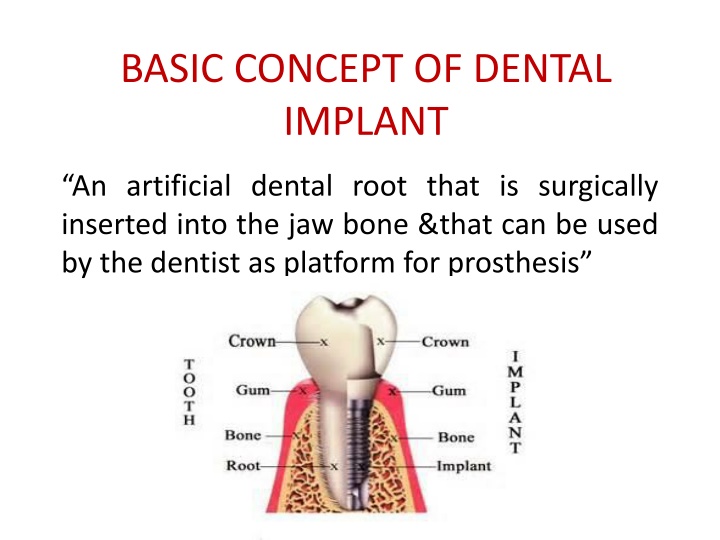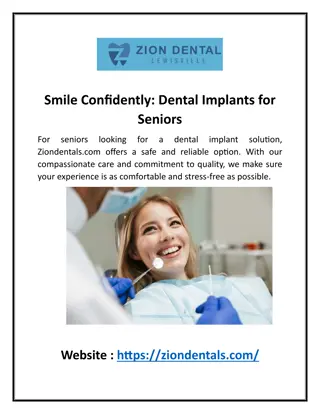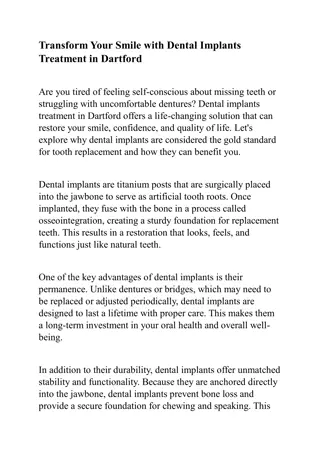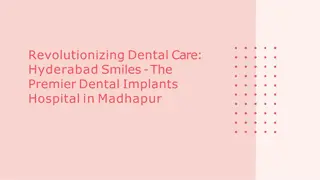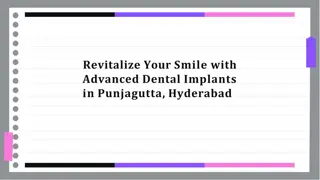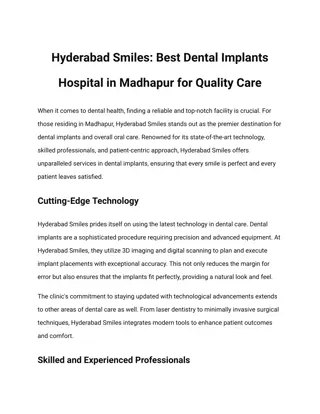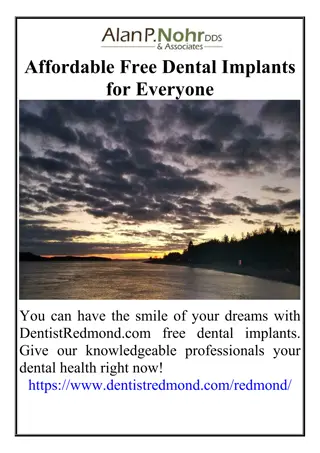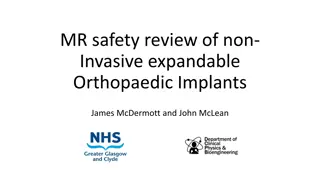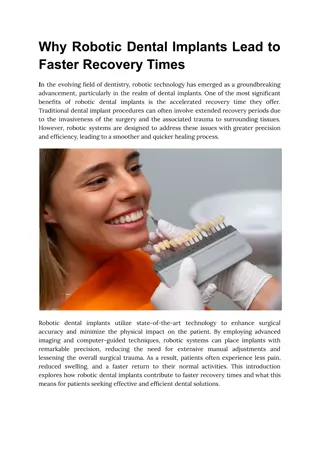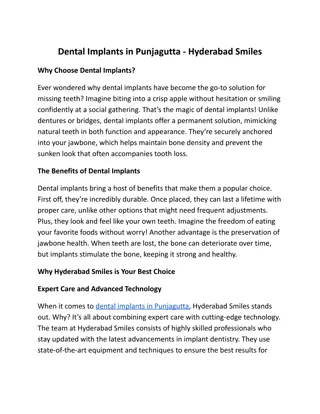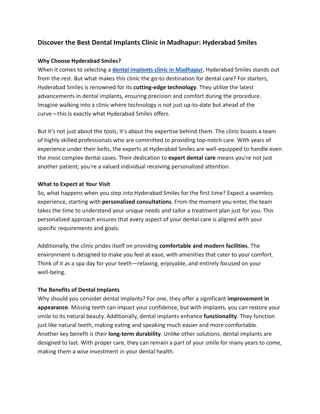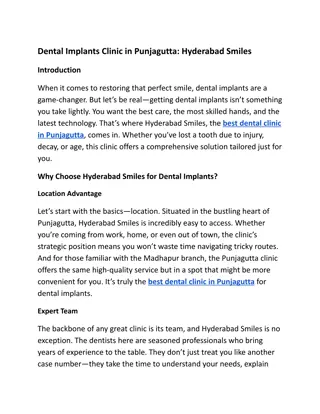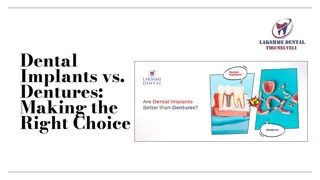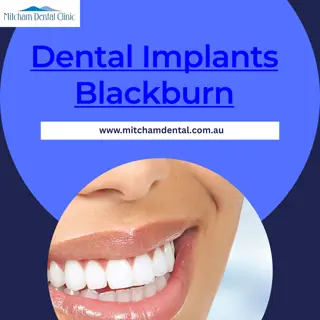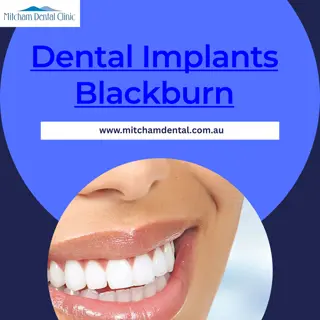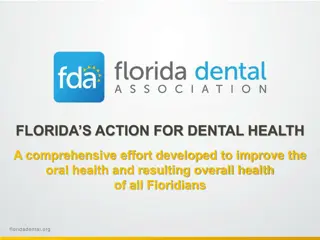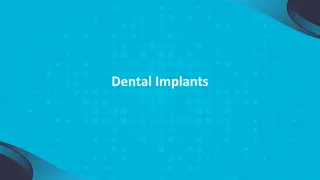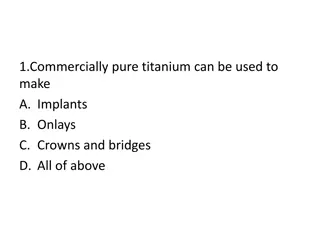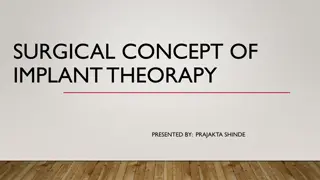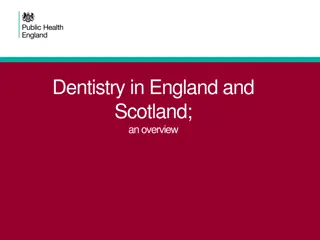Comprehensive Overview of Dental Implants
Dental implants are artificial dental roots surgically inserted into the jawbone. Explore the history, osseointegration, rationale, classifications, and peri-implant mucosa in this comprehensive guide.
Download Presentation

Please find below an Image/Link to download the presentation.
The content on the website is provided AS IS for your information and personal use only. It may not be sold, licensed, or shared on other websites without obtaining consent from the author.If you encounter any issues during the download, it is possible that the publisher has removed the file from their server.
You are allowed to download the files provided on this website for personal or commercial use, subject to the condition that they are used lawfully. All files are the property of their respective owners.
The content on the website is provided AS IS for your information and personal use only. It may not be sold, licensed, or shared on other websites without obtaining consent from the author.
E N D
Presentation Transcript
BASIC CONCEPT OF DENTAL IMPLANT An artificial dental root that is surgically inserted into the jaw bone &that can be used by the dentist as platform for prosthesis
HISTORY OF DENTAL IMPLANT 1950s P.I.Branemark & associates 1965 first patient 1976 Schroder et al. 1978 Schulte(German) 1981 Albrektsson
OSSEOINTEGRATION A direct structural&functional connection between bone and the surface of a load- carrying implant (Branemark 1960) Fibro-osseous integration -soft tissue(fibres)interposed between the implant surface & bone Biointegration -implant is covered with bioactive material like hydroxyapatite
RATIONALE FOR IMPLANT THERAPY Tooth loss related to age Anatomic consequences Poor performance of RPD Predictable long term results of implant- supported prosthesis Eliminating the need to grind healthy tooth
CLASSIFICATION OF DENTAL IMPLANT Based on type of Anchorage -submucosal -subperiosteal -transosteal -endoosteal
CLASSIFICATION OF DENTAL IMPLANT Contd.. Based on shape&form Root form-solid cylinderical/tapered -pin type -screw type -basket type -hollow cylinder
CLASSIFICATION OF DENTAL IMPLANT Contd Blade form-conventional blade design -vented blade design Based on the surface texture -surface with pure titanium -acid-etched surface -porous beaded surface -hydroxyapatite coated
PERI-IMPLANT MUCOSA Dense lamina propria covered by stratified squamous keartinized epithelium Implant-epithelium junction is analogous to the JE Epithelial cells attach to the titanium implant by means of hemidesmosomes&basal lamina Sulcus arround implant lined by sulcular epithelium
PERI-IMPLANT MUCOSA Contd.. Depth of sulcus 1.5-2.0mm Collagen fibers are nonattached¶llel due lack of cementum Marginal periimplant mucosa contains significantly more collagen&fewer fibroblasts Periodontal ligament absent Biologic width(3-4mm)=epithelial attachment(2mm)+supracrestal CT(1-2mm)
VASCULAR SUPPLY&INFLAMMATION Limited due to lack of Pdl Capillary loops below JE&SE similar to normal periodontium Inflammatory response similar to periodontal tissue
TEETH vs. IMPLANTS Lack of Pdl Implant can not intrude/migrate Proprioception -ce C/I in growing individuals Overload/parafunctional habits cause microstrain/microfracture in bone bone loss
MCQ-1 Which of the following shows the difference between peri-implant and periodontal mucosa (a)Stratified squamous keratinized epithelium (b)Sulcus lined with sulcular epithelium (c)Viable bioloigic seal between implant and epithelial cells (d)Attachment of collagen fibers
MCQ-2 The term which describes the ultrastructural contact between bone and implant is (a)Fibrous integration (b)Osseointegration (c)Ankylosis (d)Bonyintegration
MCQ-3 The less frequently used dental implant biomaterial is (a)Alloys of titanium (b) aluminum (c) Vanadium (d)Platinum
MCQ-4 The most widely used dental biomaterial in implantology is (a)Gold (b)Chromium (c)Nickel (d)Titanium
MCQ-5 Which of the following is responsible to prevent the attachment of collagen fibers to the implant surface (a)Plasma sprayed implant surface (b)Biocompatibility of implant surface (c)Absence of cementum on implant surface (d)Acid etched/ blast implant surface
